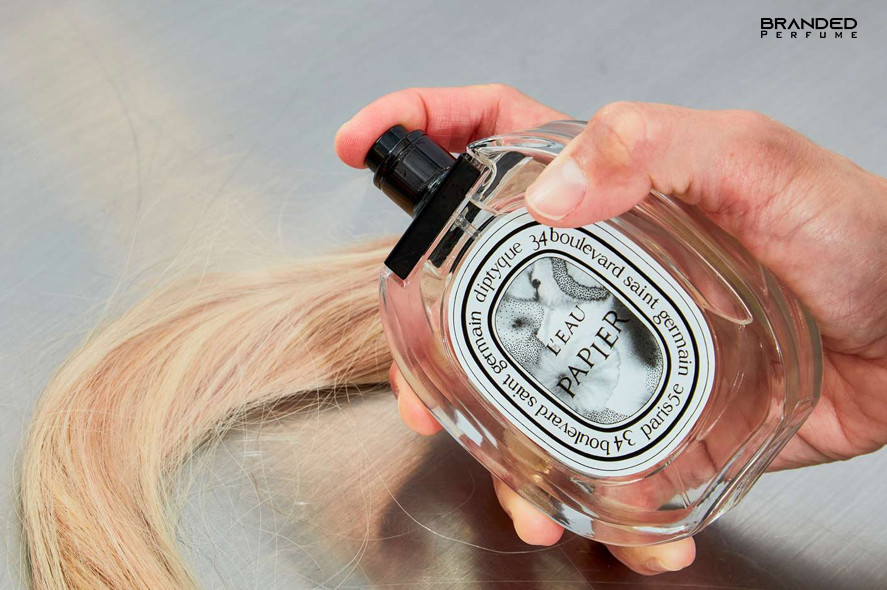Pheromones wield a silent influence over human interaction. Enclosed within the chemistry of attraction, pheromone perfumes are designed to amplify the body's natural chemistry, creating an unspoken connection with others. By harnessing the power of these invisible chemical signals, pheromone perfumes aim to enhance personal magnetism, purportedly increasing one's allure and social appeal through scent. Scent meets science elegantly.
The Science of Pheromones
Pheromones are biochemical concoctions that impact behavior through the olfactory system. They function as social communicators between humans, sending out subtle cues.
In our bodies, these naturally occurring compounds transmit signals that can cause attraction or convey information about reproductive status. The notion is that pheromone perfumes mimic or amplify these effects.
Despite the allure of "love potions," scientific consensus on pheromone perfumes' efficacy remains elusive and continues to stimulate debate within the scientific community.
Decoding Pheromone Signals
Pheromones act as silent aphrodisiacs, subtly influencing attraction and social interactions without conscious awareness.
Pure pheromone compounds in high concentration can sometimes be detected as a faint musky odor by certain individuals.
While not universally sensed, pheromones in perfumes bind to receptors, triggering responses that may vary from person to person, including potential arousal and affinity.
Complex and barely perceptible, the pheromone message is a whisper in the scented conversation of attraction, leaving a lasting psychological imprint on those within its realm.
Pheromone Research Evolution
Pheromone research has significantly evolved since its conceptual inception in the 20th century, advancing both the science and mythology surrounding them.
Initial studies focused on insects, revealing pheromones' crucial role in communication.
Further investigations broadened, encompassing mammalian studies which highlighted the existence of pheromones in animals and prompted questions about their role in human interaction, eventually steering research towards potential applications in perfumery.
Contemporary research continues to explore the intricate mechanisms of pheromone detection and response, with interdisciplinary studies spanning biology, chemistry, and psychology aiming to demystify the elusive qualities of these chemical messengers and their purported effects when integrated into perfumery. Over time, the narrative of pheromones has shifted from "magic" to nuanced biochemical discourse.
Crafting Pheromone Perfumes
The art of crafting pheromone perfumes is a meticulous process that intertwines olfactory prowess with scientific acumen. Expert perfumers and biochemists often collaborate to identify and synthesize pheromone-like compounds that can be harmoniously blended into fragrances, aiming to evoke particular responses and enhance personal aura when they intricately bind with perfume oils and essences.
Such creations are approached with a sophisticated fusion of tradition and innovation, where the ancient allure of scent meets modern pheromone emulation. These formulations are subject to rigorous testing and refinement to ensure they elicit the desired atmospheric and intimate impact, subtly aligning with the wearer's natural chemistry.
Ingredient Synergy
In the realm of pheromone perfumes, ingredient synergy is of paramount importance. The interplay between compounds must not only be safe but also effectively channel the envisioned sensory experience.
When developing these nuanced concoctions, perfumers prioritize the harmonious integration of pheromone analogs with essential oils and aroma chemicals. Selectivity and proportion are fundamental to creating a balanced and entrancing scent profile that captivates and intrigues.
Moreover, the addition of a pheromone-like ingredient must be complementary to the fragrance's core character. It should amplify the existing olfactory architecture rather than overshadow it, thereby enhancing the perfume's innate allure and complexity.
An expertly formulated pheromone perfume is an intricate tapestry of olfaction, where each thread—the pheromones, fixatives, florals, and woods—interlaces synergistically. A meticulous balance achieves a seamless scent narrative that can deeply resonate with the wearer and the perceiver alike.
The ultimate goal of this synergy is not merely to craft a perfume but to engender an olfactory ambiance that is both unique and captivating. Artistry lies in the subtle modulation of each ingredient to work in concert, creating a fragrance that exceeds the sum of its parts.
Scent Engineering Process
The process of scent engineering is both an art and a precise science.
- Selection of Base Notes: Choose long-lasting notes that provide a deep foundation for the fragrance character.
- Incorporation of Heart Notes: Blend in the middle notes, which serve as the main body of the perfume and harmonize with the base.
- Finishing with Top Notes: Add the top notes that give the first impression and eventually meld with heart notes.
- Integrating Pheromone-like Compounds: Carefully infuse pheromone analogues that can subtly alter the fragrance's emotional impact.
- Olfactory Balancing: Adjust the concentration of each element to ensure harmony in the scent profile.
- Aging and Maturation: Allow the fragrance to age, enabling the scents to fuse and their profile to stabilize.
- Quality Control and Testing: Rigorously test for scent integrity, longevity, and overall appeal in various conditions.
- Packaging and Presentation: Contain the final product in a way that preserves its quality and enhances its aesthetic value.
Each step demands thoughtful precision, ensuring a captivating outcome.
The allure of a well-crafted perfume lies in its complexity and the mysterious ways it interacts with the wearer’s chemistry.
Impact on Social Interaction
Pheromone perfumes intrigue with their promise to elevate confidence and enhance one's innate allure. They are deliberated to influence social dynamics subtly, potentially easing communication barriers and fostering connections. While not an arcane potion, the judicious blend of pheromone analogues can, according to some beliefs, amplify a magnetic persona that may resonate well in social settings.
The prospect of pheromone perfumes as a social catalyst is often met with both curiosity and skepticism. However, customers report experiences of feeling more approachable, noting an uptick in interpersonal engagements. Such anecdotal evidence continues to fuel the intrigue surrounding these unique and thought-provoking fragrances.
Attraction and Perception
The science of attraction is complex, yet pheromone perfumes tap into this intricate web to influence the perception of the wearer. They speak a silent language, capable of eliciting a multitude of responses within social ambits.
Crafted with meticulous care, pheromone perfumes aim to emulate the natural pheromones released by the body that can alter the perceptions of those nearby. By harnessing the power of synthesized pheromones, these fragrances strive to create an aura of attraction, subtly enhancing the wearer's presence and potentially increasing their magnetism in the eyes of others. Such an effect is conjectured to arise from the primal instincts encoded within our biology, hinting at an olfactory mode of unspoken communication.
Nevertheless, the interaction between pheromones and human behavior is a subject of ongoing research. Results vary considerably across individuals, making it challenging to conclusively determine the efficacy of pheromone perfumes. Yet, many users report a sense of heightened allure and an increase in positive social exchanges linked to their use.
In conclusion, while the precise mechanisms by which pheromone perfumes influence perception remain under study, the anecdotal testimonies suggest a compelling narrative. As consumers seek products that promise not just fragrance, but an enhanced social persona, pheromone perfumes emerge as a fascinating fusion of science and allure. By bridging the gap between chemistry and charisma, these scents offer a tantalizing glimpse into the potential of olfactory communication within the dance of human courtship and social interaction.
Pheromones in Body Language
Pheromones play a subtler role than physical gestures, yet their impact on interpersonal interactions is profound. They may silently influence attraction, trust, and respect—all without a word being uttered.
Unconscious reactions to pheromones can enhance the perception of presence. They signal compatibility and contribute to nonverbal rapport.
The complexity of these chemical signals extends to the way they can modulate mood, aggression, or affection. They form an invisible undercurrent to social dynamics, capable of altering the course of interactions, sometimes fostering connections where words may fail.
Within the nuanced tapestry of human communication, pheromones act as silent emissaries, conveying messages discerned through an unconscious, sensory dialogue. They interweave with visual cues and vocal intonation to create a symphony of social signals—enigmatic, yet influential. Perhaps it's no coincidence that the word 'pheromone' derives from the Greek for "carrier of excitement", a testament to its underlying power to shape social engagement.
Choosing Your Pheromone Perfume
When electing a pheromone perfume, it's pivotal to consider personal chemistry, scent preferences, and the intended effect of the elixir upon others. A fragrance should harmonize with your natural aroma and enhance your unique pheromonal signature while catering to the aesthetics of scent. The choice is deeply personal and must resonate with your body's chemistry and the ambience you wish to project.
The discerning selection of a pheromone perfume is an art in itself, inviting intrigue and perhaps subconscious connections. Allow intuition and your senses to guide you—an olfactory bond that feels natural may augment your persona's allure, captivating the senses of those you encounter.
Identifying Personal Scent Notes
Understanding your body's chemistry is crucial when selecting a pheromone perfume. It's about the harmonic mingling of the fragrance's notes with your skin’s own scent, creating a truly unique signature. Reflect on what scents complement your natural aroma and consider how they change throughout the day.
Your skin's pH and natural odors can alter how a perfume smells on you. Identifying scents that blend seamlessly with your personal chemistry is key to finding your signature fragrance.
To discern your personal scent notes, observe the changes a fragrance undergoes once applied. The top notes may captivate immediately, but the heart and base notes are what meld with your skin's natural odors over time, producing a distinctive scent profile that is uniquely you.
When choosing pheromone perfumes, consider the different layers of the scent—from the initial impression to the lingering trail. A perfume should not only appeal to you in its first spritz but should also evolve with your body chemistry throughout the day to maintain its enchantment. This compatibility ensures the fragrance feels like a natural extension of your persona, exuding confidence, allure, and sophistication. In essence, the right pheromone perfume should feel like a second skin, amplifying your individuality.
Durability and Sillage Considerations
The longevity of a pheromone perfume is a testament to its quality and craft.
- Longevity: The duration the scent lingers on your skin.
- Projection: The distance a fragrance travels in the air around you.
- Sillage: The scent trail left by the fragrance as you move.
- Concentration: The percentage of fragrance oils in the composition affects both sillage and durability.
- Skin Type: Oily skin holds scents longer, whereas dry skin may reduce longevity.
A perfume with a balanced sillage ensures a noticeable yet not overpowering presence.
Consider the interplay between a perfume's concentration and your skin type for optimal durability.
Best Pheromone Fragrances
- Marilyn Miglin’s Pheromone Perfume
- Christian Dior’s Hypnotic Poison
- Yves Saint Laurent’s Black Opium
- Coco Mademoiselle
- Tom Ford Velvet Orchid
- Narciso Rodriguez’s Narciso
- Calvin Klein’s Euphoria
- Gucci’s Guilty
- Giorgio Armani’s Armani Code
- Victoria’s Secret’s Bombshell Seduction
- Viktor & Rolf’s Flowerbomb
- Christian Dior’s Pure Poison
- Frederic Malle’s Carnal Flower
- Stella McCartney’s Stella
- Givenchy’s Ange Ou Demon
Does pheromone perfumes really work?
Pheromone perfumes have been gaining popularity in the fragrance industry with claims that they can attract others based on the release of these chemicals. However, the effectiveness of pheromone perfumes is still a topic of debate among experts.
Pheromones are chemical substances that are naturally produced by animals and humans, and they play a role in communication and attraction between individuals of the same species. In the case of pheromone perfumes, synthetic versions of these chemicals are used to mimic the natural pheromones.
While some studies suggest that these synthetic pheromones may have an impact on human behavior, the evidence is not conclusive. Factors such as individual differences, personal preferences, and cultural influences can all affect the response to pheromone perfumes.
It's important to note that pheromone perfumes are not a magical solution to attracting others. Personal hygiene, grooming, and overall confidence are still crucial factors in creating a positive impression on others.
In conclusion, the effectiveness of pheromone perfumes in attracting others is still uncertain. While they may have some impact on human behavior, it is not a guaranteed method for attracting others. Personal grooming, hygiene, and confidence remain the key factors in making a positive impression on others.
What is the use of pheromones in perfume?
Pheromones are chemical substances produced by animals, including humans, to communicate and attract others. In the context of perfume, pheromones are used to enhance the scent and create a more alluring and captivating fragrance.
When pheromones are added to perfume, they can evoke emotional and sensory responses in the wearer and those around them. These chemicals can create a subconscious attraction and intrigue, making the fragrance more seductive and memorable.
By incorporating pheromones into perfume formulations, brands aim to enhance the overall experience and appeal of the fragrance. Pheromones can give perfumes a unique edge, making them stand out in a crowded market and attracting consumers who are looking for something distinctive and captivating.
While there is ongoing debate about the effectiveness of pheromones in perfumes, many people believe in their potential to enhance attraction and create a lasting impression. Perfume enthusiasts and those seeking a signature scent are often drawn to fragrances that contain pheromones, as they offer a unique olfactory experience and the promise of increased allure.
In conclusion, pheromones are chemical compounds added to perfumes to enhance their ability to attract and captivate. By incorporating these substances into fragrance formulations, brands aim to create scents that evoke emotional responses and make the wearer more alluring. While the scientific evidence is still inconclusive, many people believe in the potential of pheromones to enhance attraction and create a memorable olfactory experience.
What's pheromone perfume smell like?
Pheromone perfume scent is subtle yet captivating, with a blend of floral and musky notes that evoke allure. The fragrance exudes a natural, sensual aroma that enhances one's charisma. Its harmonious composition of pheromones creates a unique chemistry that attracts and entices others. The scent is long-lasting, leaving a trail of intrigue wherever it is worn. Indulge in the irresistible allure of pheromone perfume and experience the power of scents that awaken desire.









